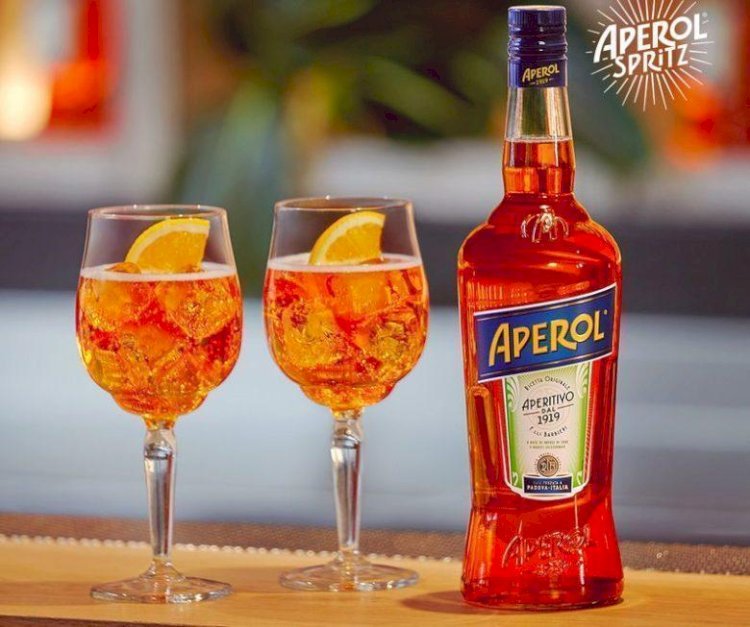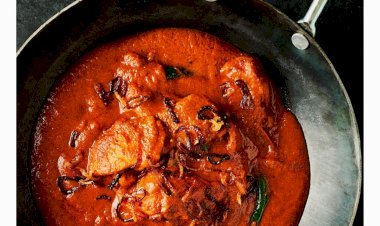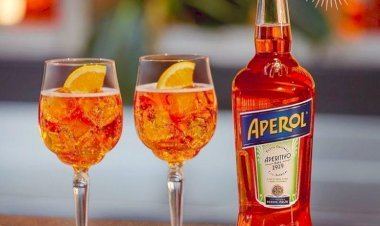Aperol Spritz - The Best Sundowner & Hunger Stricker from Italy
Things You Should Know About the Aperol Spritz

It’s hard to imagine a more fitting image for an aperitif hour than the fiery sunset glow of an Aperol Spritz . With the simple mix of Aperol, prosecco, sparkling water and an orange slice (or Cerignola olive, if you prefer), this northern Italian pre-dinner drink has spread globally as an iconic afternoon quaff.
Since the Spritz shows no sign of slowing, it’s time to learn a thing or two—or six—about this refreshing quencher.
1. Aperol Is an Amaro
Aperol was created in Padua, Italy, in 1919 as an aperitivo—that is, a beverage to be sipped before dinner to whet your appetite for what’s to come. Its bittersweet flavor, aromatic botanicals and easy 11% ABV puts the beverage in the amaro family, along with liqueurs like Campari, Cynar and Fernet Branca .
2. The Spritz Isn’t Italian in Origin
Technically, the Spritz category comes from Austria, which had possession of what is now the Veneto and Lombardy regions of northern Italy from 1805 until about 1866. Austrians didn’t love the acidic northern Italian white wines being made locally and would ask for a spritzen of water to make it more palatable—so the notion of Spritz came to be.
3. Prosecco Is the Bubbly of Choice
Made from the glera grape, prosecco has long been one of Veneto’s and Friuli’s greatest exports, but it’s also extremely popular right on its home turf. The Spritz mix began to morph once Aperol made its way east to Venice. By the early 20th century, the combination of the mildly bitter aperitif, fruit-forward bubbly wine and a splash of soda water became the iconic cocktail-in-a-goblet it is today.
4. Choose Your Sparkling Wine Wisely
You shouldn’t just blindly pick up any bottle of bubbly to mix with Aperol. While some Prosecco is perceived as overly sweet, others can be dry. The key to knowing which is which is finding the word “brut” (dry) or “extra brut” (mildly off-dry) on your label—and it may be in tiny letters on the back of the bottle, so be prepared to hunt. Counterintuitively, if you see the word “dry,” that means the bubbly is sweet and may make your Spritz rather cloying, as Aperol itself isn’t terribly bitter.
5. It’s Best on the Rocks
When making a Spritz it might seem prudent to omit ice — after all, pouring wine over ice is sometimes considered gauche. But like with Sangria, an Aperol Spritz is a drink that benefits from the chill and dilution of a few cubes in a double-rocks or wine glass. Make sure to use larger cubes so they dilute more slowly, and, as with any drink, it’s best to use clear, filtered water.
6. Its Popularity Is Thanks to Another Italian Aperitif
While the Aperol Spritz had its fans over the years, they were likely those who’d had the aperitif while vacationing in Italy, or at least visited a restaurant or bar that honored the Italian aperitif tradition. But in 2003, a deal was forged with Gruppo Campari, which makes the popular red aperitif of the same name. As the cocktail revolution swelled, Aperol hitched a ride on the wave, and its once-dusty bottles earned a heavier rotation. By the end of 2019, Aperol became the company’s biggest earner with double-digit growth, thanks to beyond-summer thirst for the Spritz. The Aperol Spritz, it seems, is no one-season pony.
By Sushant : www.foodtravelluxury.com




























